Impact
Living off Our Waters: Fibre Works by Maningrida and Marrawuddi Arts & Culture at Koskela Gallery
Living off Our Waters: Fibre Works by Maningrida and Marrawuddi Arts & Culture at Koskela Gallery
The Koskela Gallery is thrilled to present its final exhibition of the year, "Living off Our Waters" – a collection of extraordinary woven fibre works from two renowned Top End art centres, Maningrida Arts & Culture and Marrawuddi Arts & Culture.
Through countless generations, Aboriginal and Torres Strait Islander peoples have nurtured their livelihoods, finding sustenance from the surrounding waters. Beyond being a practical means of survival, fishing is a deeply ingrained cultural practice informed by ecological knowledge—a testament to the enduring connection between these communities and their natural environment.
Aboriginal art often portrays sacred totems or Dreamings but also draws from the non-sacred, featuring subjects of economic importance and environmental existence including topics such as common food animals and plants.

'Living off our waters' features woven sculpture works depicting various fish and stingrays, crafted from the leaves of the Pandanus plant & Jungle vine with natural dyes, and the inner bark of the Kurrajong and Stringybark Eucalyptus trees.
The collection encapsulates the vibrant life on the waters, the rich culture of the communities and the earthy colours drawn from the landscapes.


Pandanus, a versatile medium, is locally sourced during bush trips. Harvested pandanus is split, dried, and dyed using natural pigments collected in specific seasons.
Click and drag the carousel below to the left to see the process >
1. Pandanus Plants 2. Harvesting 3. Harvested Pandanus 4. Splitting the Pandanus 5. Ready for dying 6. Dying with natural Ochres 7. Drying the dyed pandanus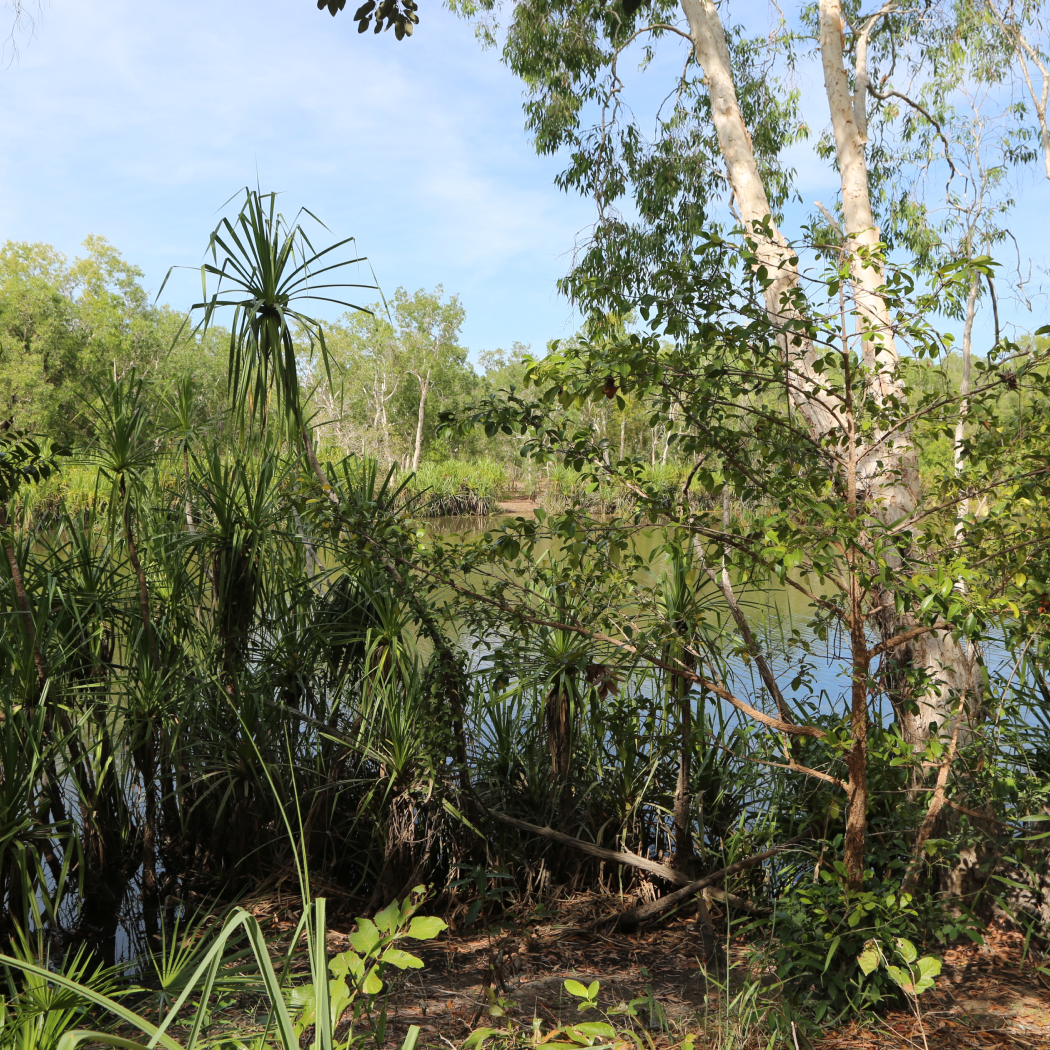
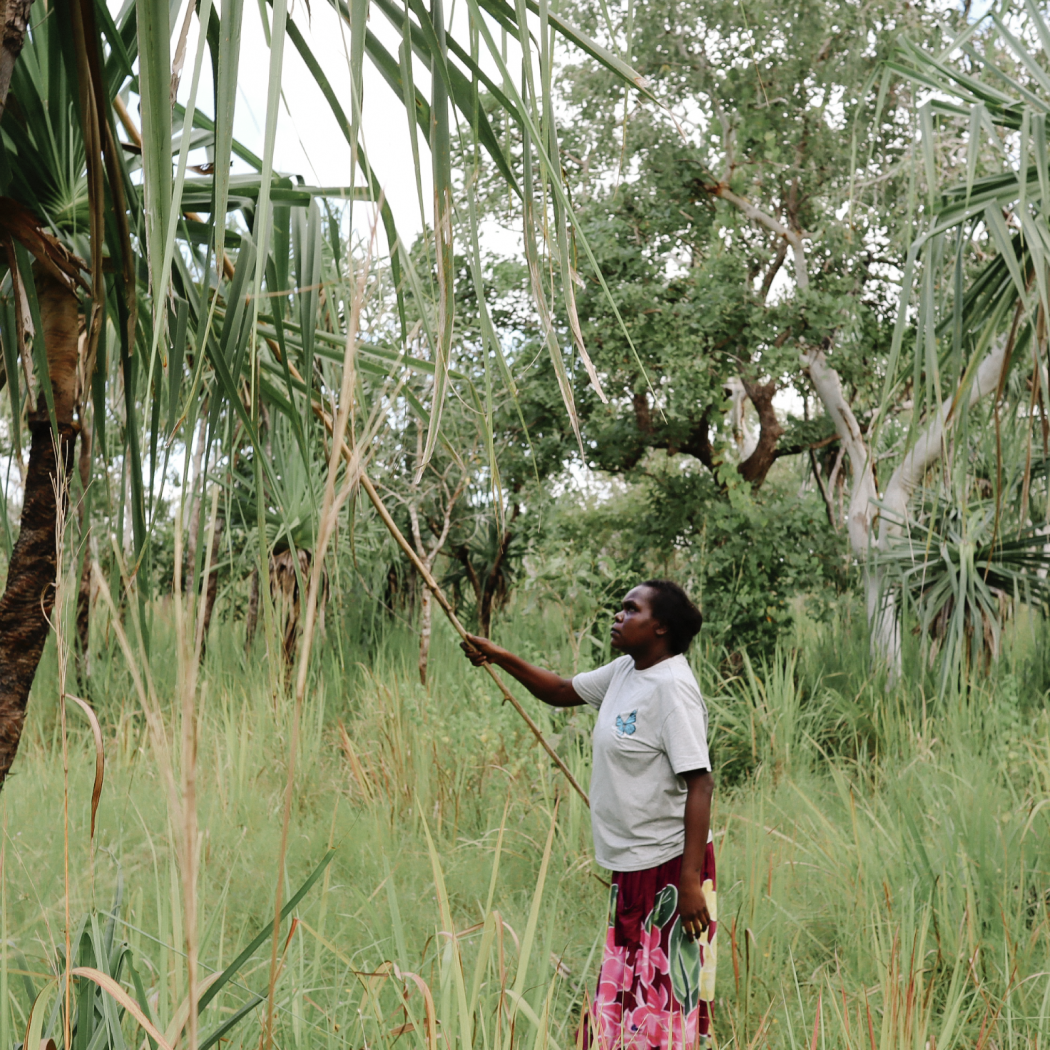
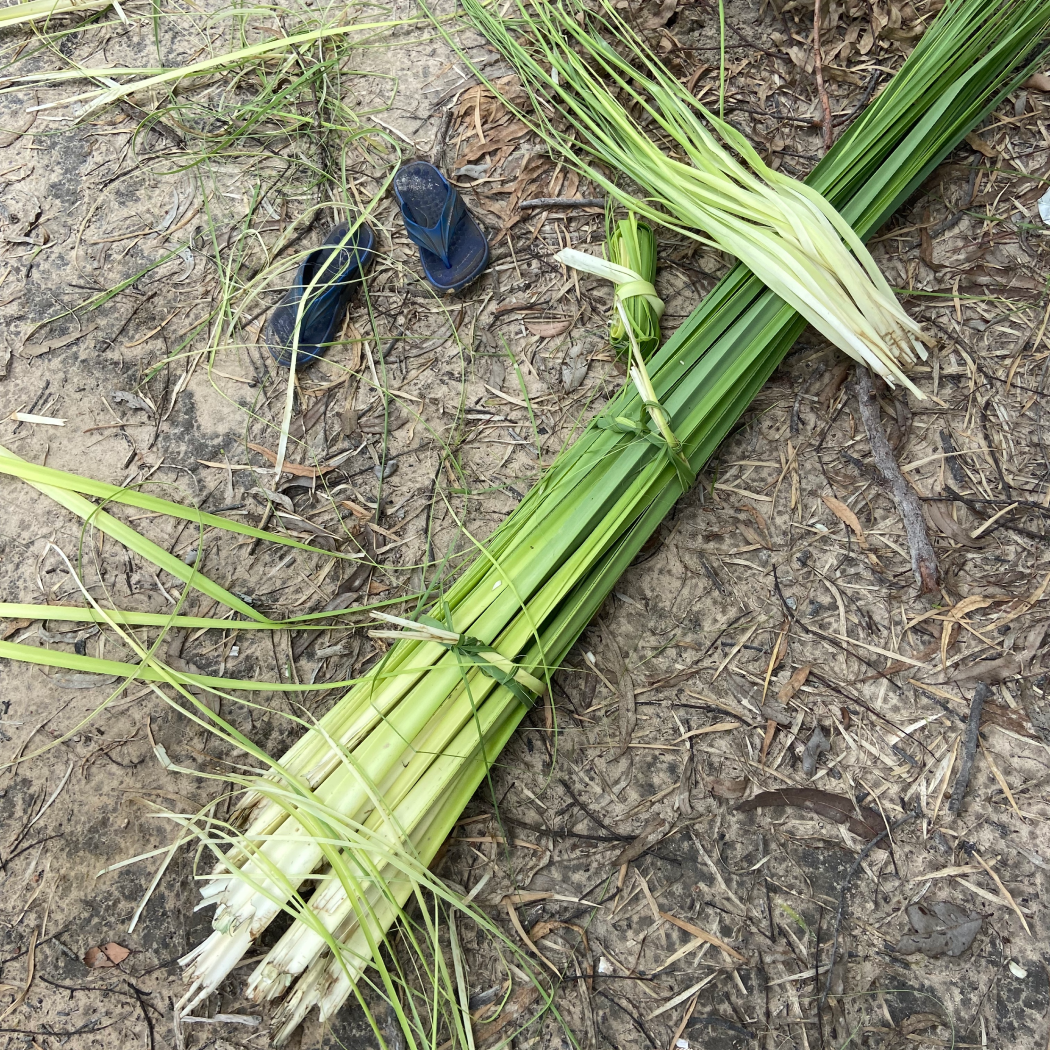
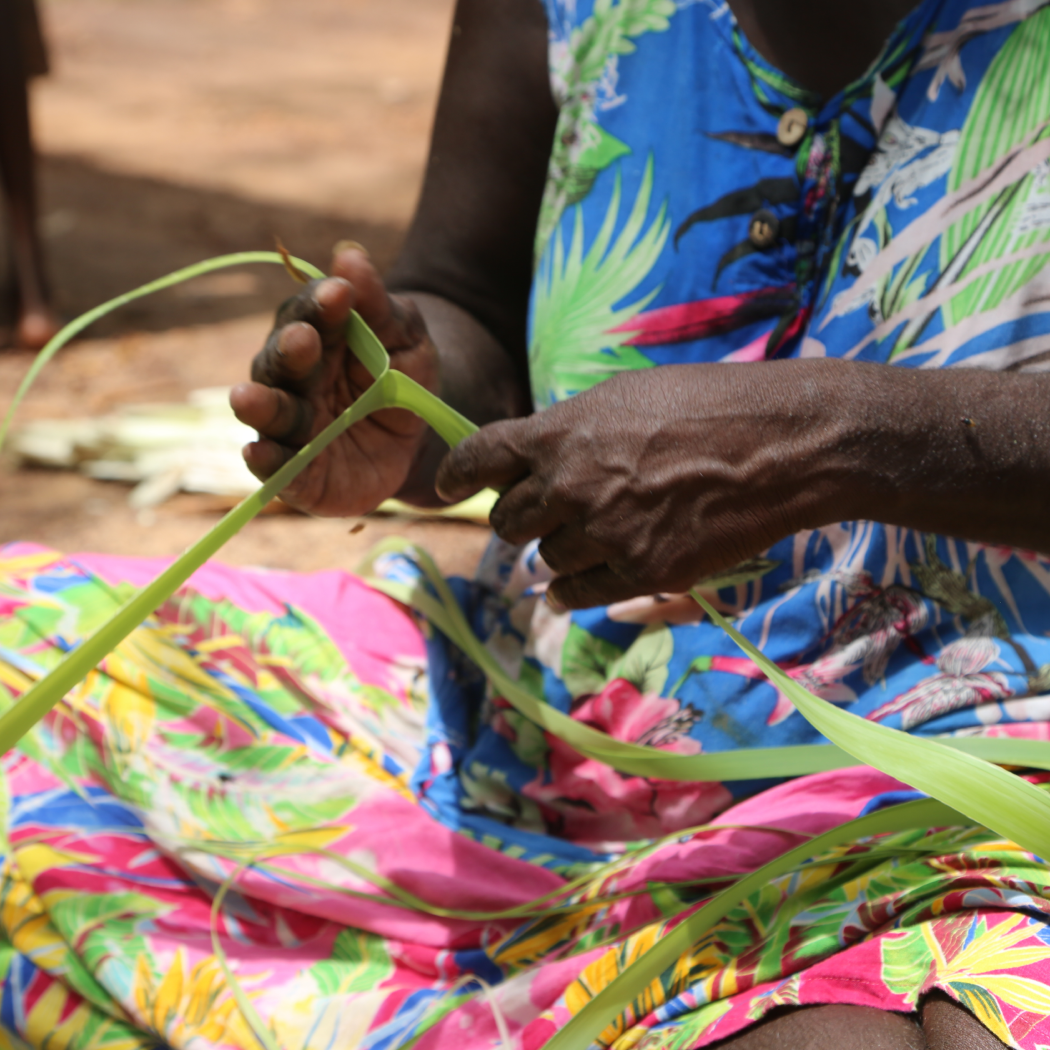
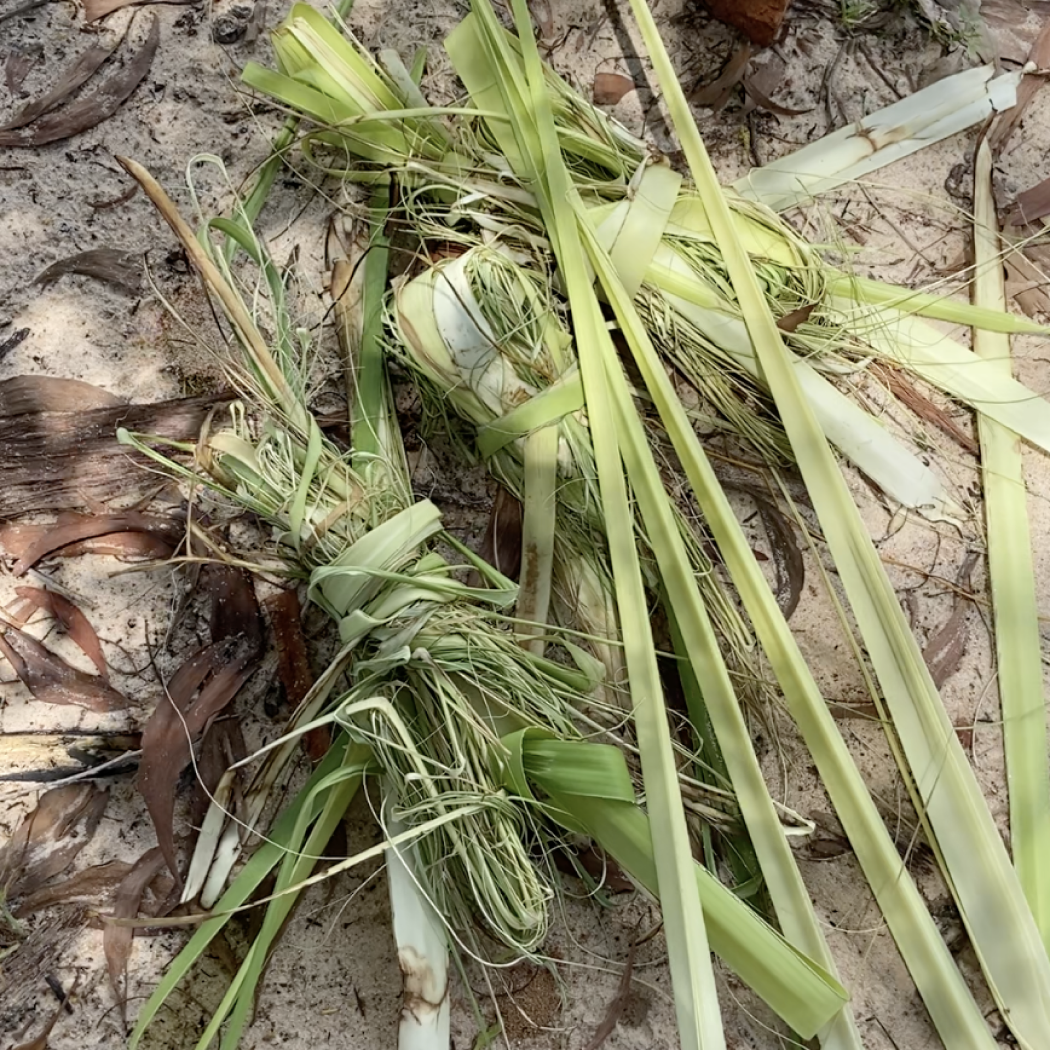

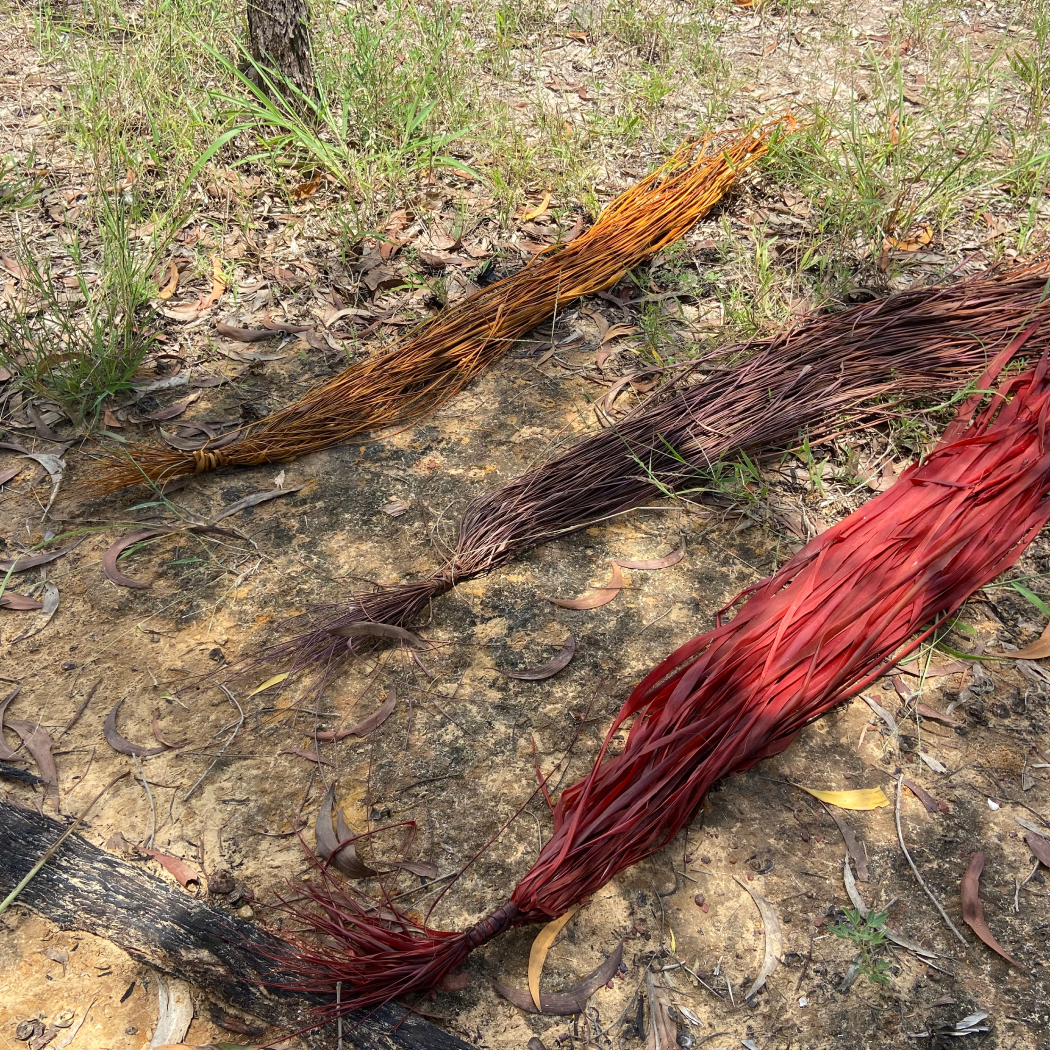
Natural dyes are made from collected roots, leaves or flowers of plants within the weaver’s clan estate based on seasonal variations, for example Windilk (seeds from Haemodorum coccineum) grows in the Monsoon season (Dec – March), and creates a Purple/Pink colour.
"The same dye bath is often used to dye a number of batches of fibre, with variations in the colours depending on the time spent in the dye bath and the potency of the bath. The women skilfully use salt and wood ash as mordants and colour enhancers" - Maningrida Arts & Culture.
The dyed pandanus undergoes a timely weaving process that is physically hard work, and weaving and collecting is now only done by women and seen as ‘Women’s business’, as most always, it will be women harvesting and weaving.

..variations in the colours depend on the time spent in the dye bath and the potency of the bath. The women skilfully use salt and wood ash as mordants and colour enhancers - Maningrida Arts & Culture
Located in the heart of Kakadu National Park, the artists of Marrawuddi Arts & Culture embark on regular bush trips, immersing themselves in the surrounding landscapes to gather materials for their creations. This communion with nature is not just a journey; it's an integral part of the artistic process.
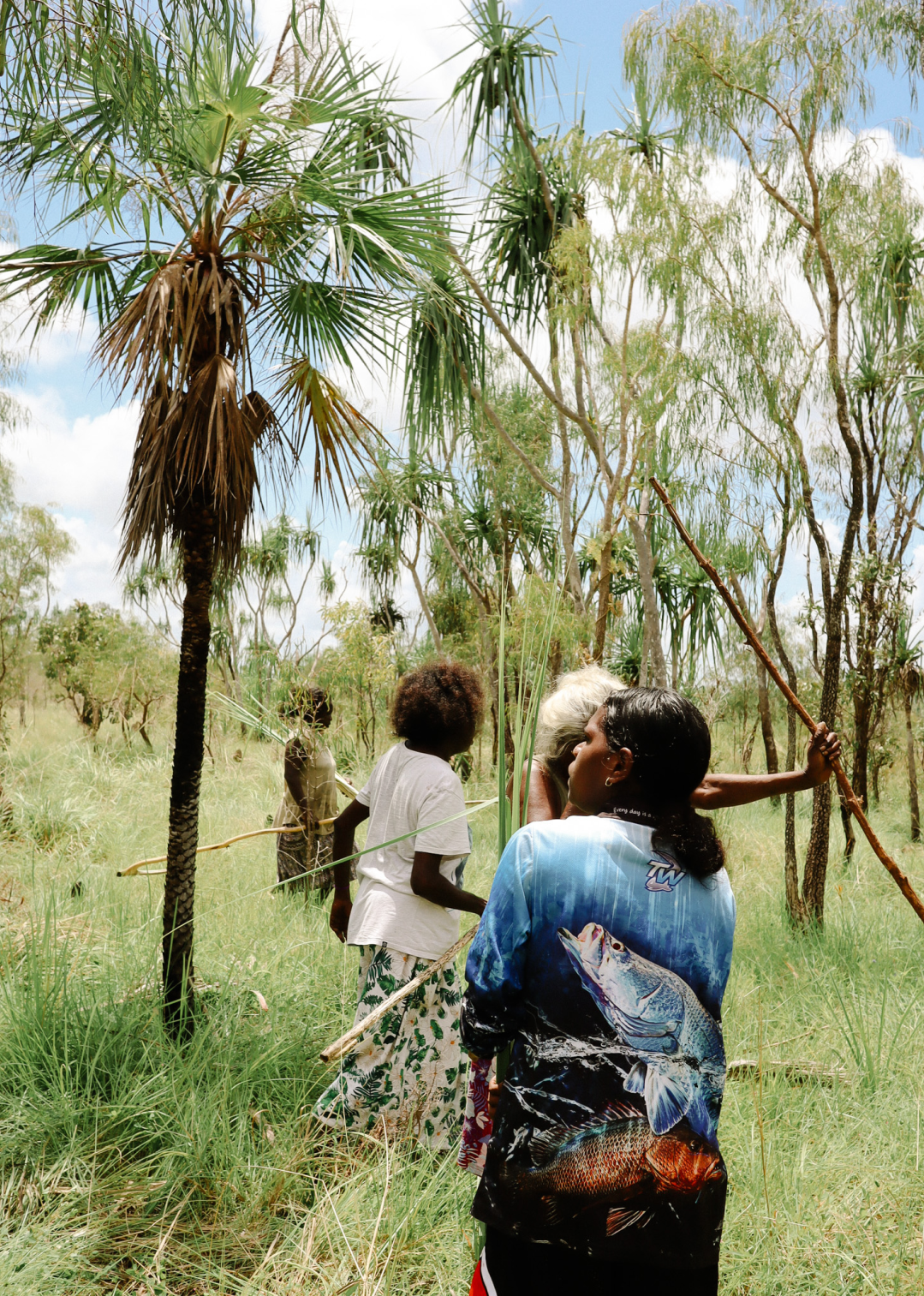
Marrawuddi Weavers Harvesting Pandanus on Country

Murdilnga’s innovation inspired many other weavers, who are producing an array of beautifully resolved flat figurative works (stingray, butterflies, spiderwebs) and spiritual figures and Ancestral beings.
The fibre works produced in this region are not merely artworks; they are a celebration of cultural creativity, tradition and storytelling. Each piece tells a story, not just through the skilful weaving but also through the infusion of natural dyes sourced from the weaver's clan estate. Maningrida Weavers Harvesting Pandanus & digging roots for natural dyes






